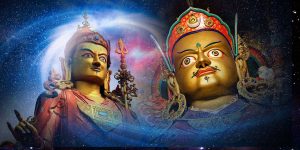Awakening to success — following in the Buddha’s footsteps — the ultimate “self-help” path
Around 563 BCE, Siddhartha Gautama sat under a massively branching Bodhi tree for days — until he achieved the “awakened” intellect of a Buddha. Bodhi literally means “awakened,” and today, an “ancestor” of the great tree in Bodh Gaya — where Buddha became the “Enlightened One” — is called the “Maha-Bodhi” tree — literally Great Awakening tree. He didn’t just achieve some basic insight (Prajna in Sanskrit) —Bodhi Gautama became Buddha, the fully ‘Enlightened One.’
Special feature
Stella Lincoln
It is risky to talk of “Enlightenment” and “Nirvana” and lofty concepts that are outside of our ability to comprehend. For this reason, there are literally thousands of Sutras, covering the teachings spanning the next few decades of Buddha’s life — and offering tantalizing glimpses of what Buddha discovered: the truth of suffering, Four Noble Truths, Eightfold Path, Dependent Arising, Shunyata — and other profound truths.
Since Buddha’s discoveries led to “freedom from suffering,” the lessons are both important and difficult to fully comprehend. In other words, to answer “what is Enlightenment” or “What is Nirvana” would require Enlightenment. Until then, Buddha gave us the path — Dharma — which if grasped or practiced — can ultimately lead to that lofty goal of Enlightenment. And, he gave us a Sangha of fellow travelers on the path to help us along.
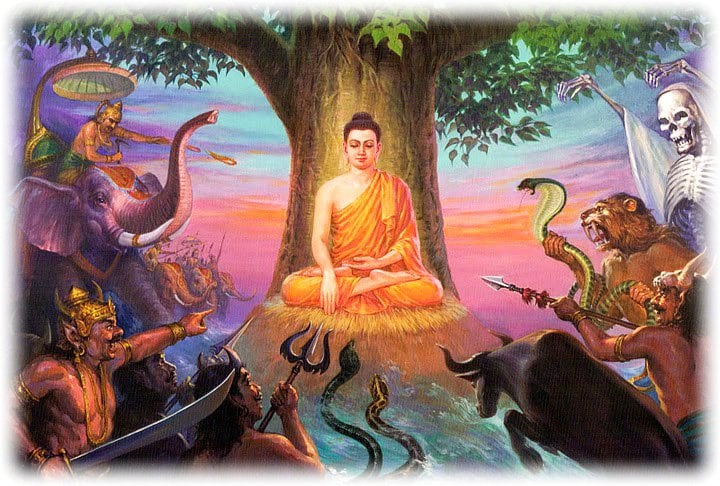
Escaping Suffering: the Mission

To help us escape the cycle of suffering, Buddha initially taught the Four Noble Truths — the four foundational principles of Buddhism:
- Dukkha – The principle of suffering
- Samudaya – Cause of Dukkha, desire, craving, or attachment
- Nirodha – Eliminating desire, craving and attachment
- Magga – An enlightened path to end Dukkha
Buddhism is an unconventional path, because it does not require faith; it is the ultimate “self-help” path.

Buddhism is an open invitation for people to find their own path leading to Bodhi (Awakening). This is why Buddhist sutras are thought of as “teachings” rather than “scripture.” Buddha taught in countless ways — skillful means suitable for different students — beginning with the path of conduct “the Noble Eightfold Path.” Even the Eightfold Path is structured around what we should “self-contemplation” (goal: wisdom), “self-guided conduct” (goal: removal of attachments and cravings), and “self-discipline.” Buddha illuminated the path — he doesn’t walk it for us.
The Noble Eightfold Path
The Noble Eightfold Path is the fourth pillar in Buddhist teachings and one of the core concepts that begin the Buddhist guide to “Awakening.”
The Eightfold Path is a path of conduct in life that helps remove the causes of suffering — designed to help us achieve the Three Perfections:
- Wisdom (panna or prajna)
- Ethical conduct (sila)
- Mental discipline (samadhi)
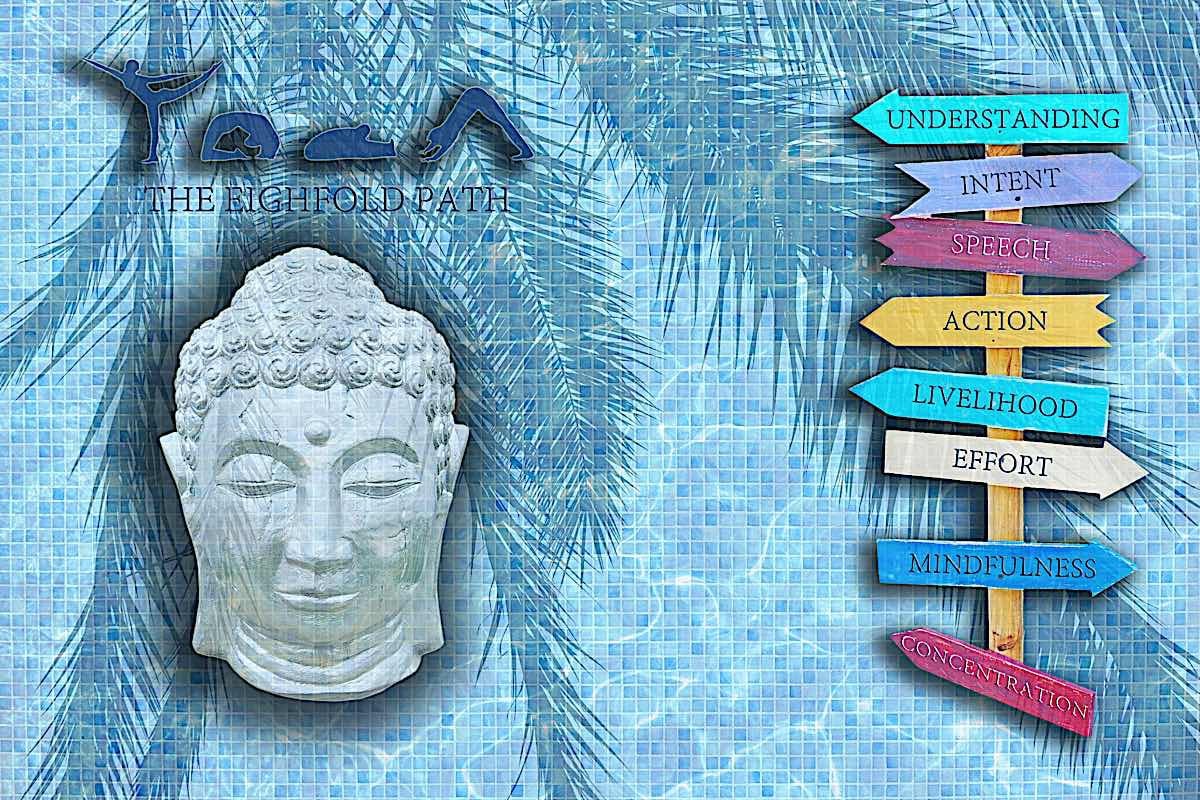
Wisdom — Prajna
Prajna or wisdom refers to insight in the truth of reality and perception through recognizing impermanence, suffering, selflessness, and a recent addition, emptiness. There are two of the eight noble factors that make up wisdom on this concept.
Right understanding (Samma ditthi)

Samma Ditthi or the right understanding partially means comprehension of the Four Truths that explain how things actually are — but in wider scope, includes deep topics such as Dependent Arising, Shunyata and other concepts from the many teachings of the Buddha. This understanding leads to the highest wisdom which helps us comprehend ultimate reality.
This understanding can be broken down into two categories. One is a general knowledge of this world, which is required to understand anything, known as ‘anubodha.’. And then there is a deep and profound level knowledge known as ‘pativedha,’ which can only be achieved through a highly developed mind, cleared of all impurities.
Right thought (Samma sankappa)
Humans have free will, but in order to overcome suffering, there are three factors to the right thought.
- The idea of renunciation.
- To have good motives for your actions.
- To resolve to be harmless.
Buddha observed that the exact opposite thoughts causes of suffering. These intentions are to satisfy desire, ill-will, and hatred. Whenever an individual acts upon these harmful desires, it creates negative “karma” (action) which have ongoing consequences. It is essential to understand that the emphasis in this context is to achieve a noble thought process that lays the basis for further virtuous acts to come.
Ethical Conduct — Sila
Now under ethical conduct based on the concept of universal love and compassion for all living beings, there are three of the eight noble factors.
Right Speech (Samma vaca)
Right speech or Samma Vaca includes the abstention from:
- Telling lies
- Backbiting, slander, promoting disloyalty, disharmony, hatred, enmity, etc.
- Making harsh, rude, impolite and abusive comments or use of language
- Idle gossiping
Words can become the cause of immense suffering or pleasure. Speech itself is the power to make friends or enemies, incite anger or kindness, and inspire peace or start a war, among many other examples.
The point here is to engage in speech with positive outcomes. If one refrains from these four forms of wrongdoing, one would naturally speak the truth or maintain noble silence if unable to.
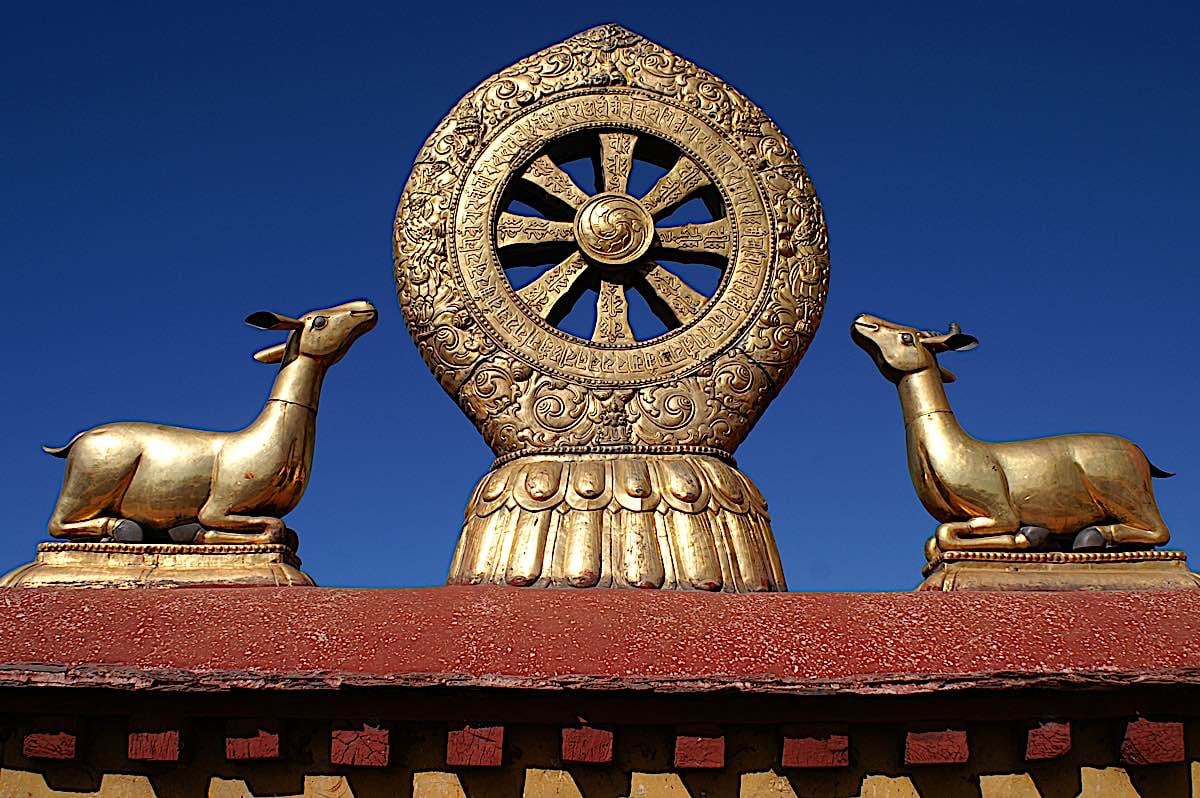
Right action (Samma kammanta)

The correct action is directly connected to promoting moral and honorable conduct. Your beliefs affect your plans, and with the right intentions, an individual can accomplish the right moves. If you promise to do something, with your speech, you need to be able to back it up with the right actions. This is the reason why modern families are adapting to Buddhist Practices. It is not just the exoticism of the belief that attracts them but the rightfulness and ease of adaptability towards doing the right thing that follows.
Right livelihood (Samma ajiva)
Samma Ajiva or the right livelihood are positive and contributing forms of “making a living” and particularly to refrain from making one’s livelihood through harmful professions:
- Earning living trading arms or weapons (satthavanijja)
- Earning living trading in human beings (sattavanijja)
- Trading in any form of animal meat or meat byproduct, for example for slaughtering or breeding purposes (mamsavanijja)
- Buying or selling alcoholic or any other intoxicating drinks (majjavanijja)
- Purchasing or dealing in any form of poison (visavanijja)
Buddha also taught us that there are no professions that are more revered or less respected. A janitor is by no means less honorable than a law enforcement officer. Both individuals need to have dedication and commitment to their professions to accomplish success.
Mental Discipline — Samadhi
The remainders of the three out of eight factors lie in this category. They recognize that all karma (actions) derive from our thoughts. Anybody who disciplines their thought-process, action, and practical impulse through mental discipline, attains a wholesome state of mind.

Right effort (Samma vayama)
 Samma Vayama or the right effort is the willingness to make the efforts to:
Samma Vayama or the right effort is the willingness to make the efforts to:
- Eliminate existing negative karmas (activities)
- Prevent the roots of new negative karmas from developing (resisting, for example, cravings)
- Establish new roots of good intentions and karma
- Let existing good beliefs (kusal) and plans flourish.
Buddhists make a focused effort to maintain a positive mindset. You cannot always agree with other people all the time, but we try to refrain from “gut reactions” and spontaneous responses. The practice is to learn self-control and to forbear impulse action.
Right mindfulness (Samma sati)
Samma Sati or right mindfulness is to be more aware and mindful of these four aspects consciously:
- Your body (kaya)
- Feelings or sensations (vedana)
- Your mind (citta)
- Ideas, thoughts, and conceptions (dhamma).
For a Buddhist to achieve success — or Realizations — the individual must be able to have control over each of these: body, feelings, mind, thoughts. The individual must be able to discipline them regardless of external circumstances to achieve the right mindfulness.
The practice of concentrated breathing comes under Samma Sati. It is one of the best-known exercises connected to the body for mental development. In most cases, our body controls us. When our body is hungry, we give it food. When our body is thirsty, we drink water.
Buddha also taught us to stay in the “present moment” — to be mindful at all times. You could say mindfulness is the secret to all of the Eightfold Path, since, with a mindful attitude we are able to manage our body, feelings, mind, thoughts, cravings, attachments, and all of the rest.
There are different types of meditation techniques to achieve the successful performance of unique body parts. Breath brings to the focus to the body. Mantra meditation is a form of “speech” mindfulness concentration exercise that incorporates repetitive sounds to attain a higher concentration. Visualization meditation helps free the thoughts from rigid conceptions.
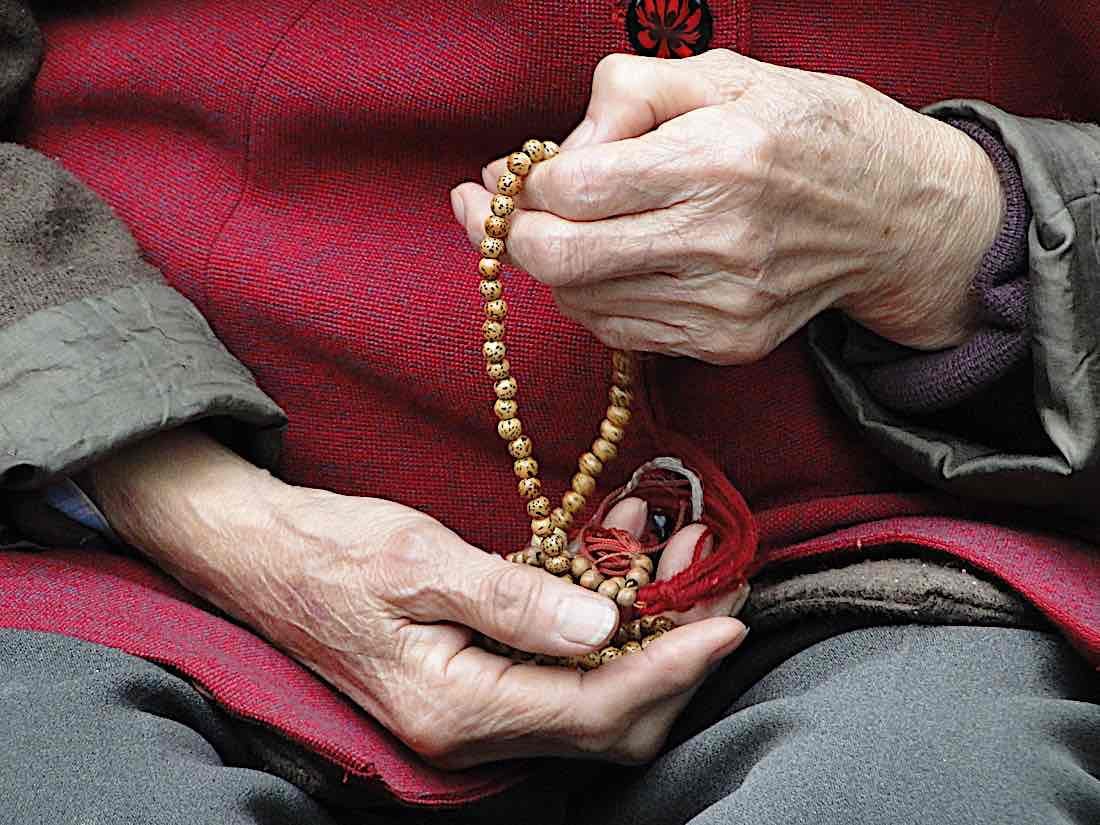
Right concentration (Samma samadhi)

The third factor of mental discipline and the last of the Eightfold Path is the right concentration, which leads to the four stages of Dhyana or trance.
At the first stage of Dhyana, thoughts like lust, hatred, anxiousness, and doubt are controlled while joy and happiness are maintained. Then the second stage revolves around suppressing intellectual activities while tranquility and Ekaggata — or “one-pointedness concentration — is observed, and the feelings of joy and happiness can be retained. By the third stage, the feeling of happiness and joy disappears while the disposition lasts in addition to conscious composure. Lastly, at the fourth and final stage of Dhyana, all active sensations die out. No sorrow, doubt, joy, happiness, worry ever remain. Only pure equanimity and awareness are exercised.
Author Bio
Stella Lincoln is a Psychology Tutor at Academist Help, and often conducts health-related seminars at the University of California. She is a single mother and provides dissertation editing at King Essay.
More articles by this author
Search
Latest Features
Please support the "Spread the Dharma" mission as one of our heroic Dharma Supporting Members, or with a one-time donation.
Please Help Support the “Spread the Dharma” Mission!

Be a part of the noble mission as a supporting member or a patron, or a volunteer contributor of content.
The power of Dharma to help sentient beings, in part, lies in ensuring access to Buddha’s precious Dharma — the mission of Buddha Weekly. We can’t do it without you!
A non-profit association since 2007, Buddha Weekly published many feature articles, videos, and, podcasts. Please consider supporting the mission to preserve and “Spread the Dharma." Your support as either a patron or a supporting member helps defray the high costs of producing quality Dharma content. Thank you! Learn more here, or become one of our super karma heroes on Patreon.
Stella Lincoln
Author | Buddha Weekly
Stella Lincoln is a writer at Free Essay Writer and often conducts health-related seminars at the University of California. She is a single mother and provides dissertation editing at King Essay.






